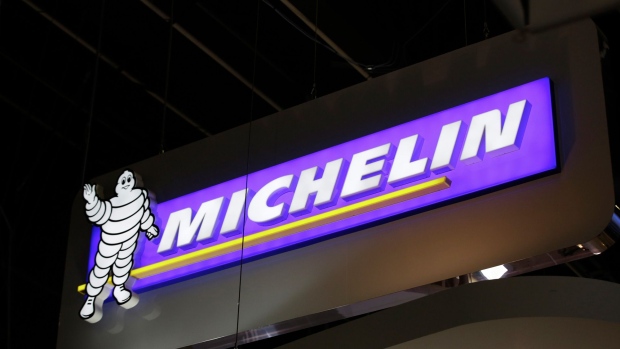Apr 8, 2021
Michelin Reinforces Hydrogen Bet in Move Beyond Selling Tires
, Bloomberg News

(Bloomberg) --
Michelin is intensifying efforts to make fuel cells as the French company bets that growing demand for hydrogen vehicles will help reduce its dependence on tires.
Chief Executive Officer Florent Menegaux will unveil a new growth strategy later Thursday and provide details on three main avenues for diversification. The tire maker has said fuel-cell production, 3D printing and composite materials will generate billions of euros in additional revenue and account for as much as 30% of sales by the end of this decade.
Michelin’s expansion into hydrogen is built around Symbio, its venture with car-parts maker Faurecia SA. The business is developing what it claims will be Europe’s biggest hydrogen-systems factory. The Saint-Fons site in eastern France will supply fuel cells for a new range of cargo vans produced by Stellantis NV and is in talks for additional orders, according to Valerie Bouillon-Delporte, Michelin’s hydrogen ecosystem director.
“Auto and parts makers are increasingly focusing on hydrogen and that’s positive,” she said in an interview. “The market is starting to put down a solid base.”
Cie Generale des Etablissements Michelin is investing in hydrogen even as its importance to the transport sector remains limited. Automakers sold just 2,380 vehicles powered by fuel cells in the third quarter of last year, compared with 826,000 plug-in hybrid and fully electric cars, according to BloombergNEF. Still, shipments of hydrogen vehicles have been growing and manufacturers including Toyota Motor Corp., Daimler AG and Hyundai Motor Co. are investing in related projects.
Green Fuel
Energy companies are increasingly turning to hydrogen as a possible carbon-free fuel produced by electrolysis of water powered by renewable energy. So-called “green” hydrogen may be cheaper than natural gas in at least 15 countries by 2050, BNEF said Wednesday. It’s eyed mainly as a potential fuel for vans, trucks and ships because its higher storage density offers an advantage in weight and range over batteries used in passenger EVs.
“There is real movement in the market on technology and consolidation to structure it,” Bouillon-Delporte said.
Symbio targets about 1.5 billion euros ($1.8 billion) in revenue and an about 12% share of the global fuel-cell market market by the end of the decade.
Hydrogen Race
The company supplied equipment for Renault SA’s first hydrogen-powered Kangoo delivery van, but the French carmaker has since partnered with Latham, New York-based Plug Power Inc. Additional rivals include Canada’s Ballard Power Systems Inc. and Ekpo Fuel Cell Technologies, a venture created by Germany’s ElringKlinger AG and France’s Plastic Omnium SA.
“A few months ago I would have said that the race was between Europe and China, but I think the U.S. is emerging as a third actor,” Bouillon-Delporte said, pointing to President Joe Biden’s call for sweeping investment in electric vehicles and renewable power.
Michelin and Symbio will seek to benefit from subsidies sparked by Europe’s plans to produce renewable hydrogen. France and Germany are among countries that plan to pour billions of euros into development programs.
“State aid is necessary to get the industry off the ground,” Bouillon-Delporte said. “Each government is choosing its champions.”
©2021 Bloomberg L.P.





